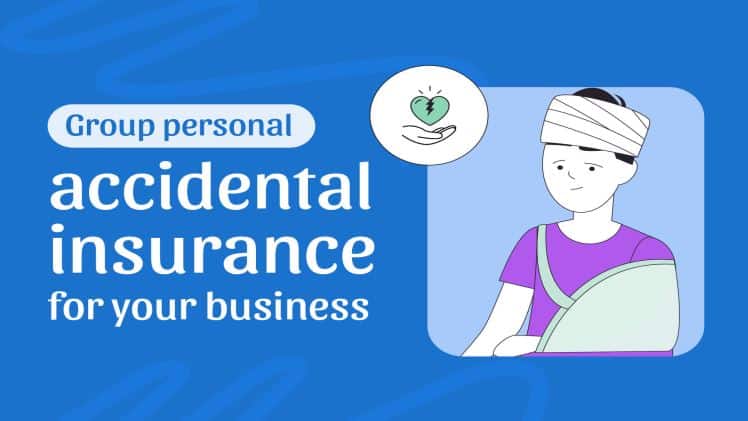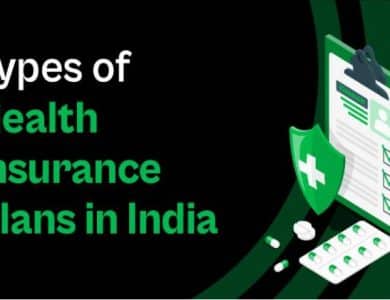How to Buy the Best Group Personal Accident Policy Like a Pro

Group Personal Accident (GPA) insurance is a vital safety net that provides financial protection to individuals and groups in the event of accidents. Whether you’re an employer seeking to offer this coverage to your employees or an individual responsible for obtaining GPA insurance for a group, making a savvy decision is crucial. In this guide, we’ll explore the expert steps to buy the best Group Personal Accident policy, ensuring that you make an informed choice.
Chapter 1: Understand Your Needs
Before diving into the purchase process, it’s essential to assess your specific needs and the needs of your group. Consider the following:
1.1 Identify the Covered Group
Determine the individuals or groups you intend to cover under the GPA policy. This could be employees, members of an organization, students, or any defined group.
1.2 Assess the Group Size
Know the size of the group you plan to insure. Group policies often have minimum and maximum group size requirements, so ensure your group fits these criteria.
Chapter 2: Define the Coverage
Understanding the coverage options is crucial to tailor the policy to your group’s requirements. Key coverage aspects include:
2.1 Accidental Death Benefit
– Consider the coverage amount paid out to beneficiaries in case of accidental death. Ensure it aligns with your group’s needs.
2.2 Permanent Total Disablement (PTD)
– PTD coverage offers compensation if an accident results in permanent total disablement. Review coverage limits and qualifying criteria.
2.3 Partial Disablement (PPD)
– PPD coverage provides compensation for partial disabilities due to accidents. Understand the extent of coverage and qualifying conditions.
2.4 Medical Expenses
– Assess coverage for medical expenses incurred due to accidental injuries. This includes hospitalization, surgeries, ambulance charges, and outpatient care.
2.5 Transportation and Repatriation Benefits
– Check if the policy covers transportation costs to the hospital following an accident. Also, confirm whether there’s coverage for repatriation of remains in case of accidental death abroad.
2.6 Education and Funeral Expenses
– Some policies offer benefits like children’s education expenses and coverage for funeral expenses. Evaluate these options based on your group’s needs.
Chapter 3: Coverage Limits and Deductibles
Understanding the maximum coverage limits for each benefit within the policy is essential. Additionally, inquire about deductibles or copayments, which are the amounts to be paid out of pocket before insurance coverage activates.
Chapter 4: Premiums and Affordability
4.1 Premium Structure
– Familiarize yourself with the premium structure. Determine whether the premiums will be paid by the employer, the group members, or split between them.
4.2 Budget Considerations
– Ensure that premium payments are affordable for both the group as a whole and individual members. It’s crucial to maintain financial sustainability.
Chapter 5: Exclusions and Waiting Periods
5.1 Policy Exclusions
– Review the policy’s exclusions, which outline situations or conditions not covered. Common exclusions include self-inflicted injuries, pre-existing conditions, and high-risk activities.
5.2 Waiting Periods
– Inquire about waiting periods. Some policies may have waiting periods, particularly for specific benefits, before they become effective.
Chapter 6: Claim Process
6.1 Claims Procedure
– Understand the claims process thoroughly. Know how to report an accident, the required documentation, and the timeline for claim settlement. Efficient claims processing is vital during challenging times.
Chapter 7: Policy Term and Renewability
7.1 Policy Term
– Determine the duration of the policy. Choose between short-term and long-term policies, aligning the choice with your group’s needs.
7.2 Renewability
– Check if the policy offers renewal options. Renewable policies ensure continuous coverage, offering peace of mind over time.
Chapter 8: Portability
– Consider whether the policy allows members to continue coverage if they leave the group or organization. Portability can be valuable when individuals change employment or group affiliations.
Chapter 9: Legal and Regulatory Compliance
– Ensure that the policy complies with all legal and regulatory requirements in your region. Verify that it meets the necessary standards and certifications.
Chapter 10: Customization and Additional Riders
– Assess whether the policy can be customized to meet your group’s unique needs. Some policies permit the addition of riders or adjustments to coverage amounts, providing flexibility.
Chapter 11: Customer Support and Reputation
– Research the insurer’s reputation for customer support, especially in efficiently handling claims. Reading reviews and seeking recommendations can provide valuable insights.
Chapter 12: Seek Expert Advice
– Consider consulting an insurance expert or broker who can guide you through the intricacies of purchasing Group Personal Accident insurance. Their expertise can help you find the most suitable policy for your group.
Conclusion
In conclusion, mastering the process of purchasing the best Group Personal Accident Policy is a crucial skill for those responsible for managing employee health benefits. By thoroughly understanding your group’s needs, carefully defining coverage, considering premiums and affordability, and being aware of policy exclusions and terms, you can make an informed decision that provides optimal protection. Remember, a Group Personal Accident Policy is more than just a financial safety net; it’s a testament to your commitment to the well-being and security of your group members. Whether you’re an employer, an organization leader, or a group administrator, the right policy not only safeguards against unforeseen accidents but also reinforces a culture of care and support within your group. With the right approach and expert guidance, you can navigate the complexities of insurance purchasing and secure a policy that meets your group’s unique needs, ensuring peace of mind and financial security for all members.




